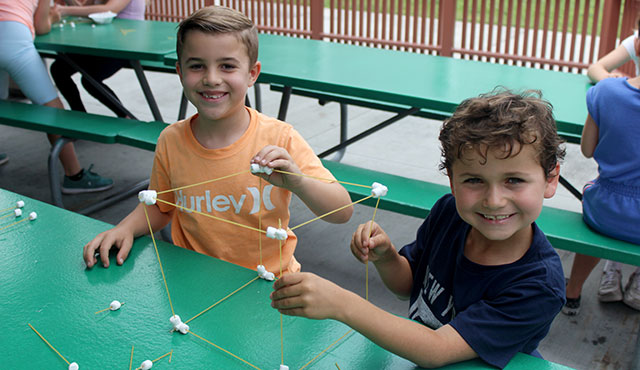Think elementary STEM education (Science, Technology, Engineering, Art and Math) is out of reach? Picture an elementary classroom. Kids gather around the sand table and the teacher passes out some props—marbles, rulers, boxes, and cups. Students explore freely, filling cups with sand, burying marbles, and turning the rulers into shovels and rakes. Then the teacher says: “I have a challenge for you today. How fast can you make the marbles roll?” Kids start rolling marbles across the sand, only to find they get stuck. Then one student tries putting his marble on a ruler. It rolls much faster. Then another props his ruler up on a cup and the marble flies.
After the kids explore, they gather on the rug to talk about their observations. The teacher asks: “What did you design out of your tools that make the marble roll fastest? What do you think makes the marble slow down? Why do you think the marble rolls faster on the ruler than in the sand?”
Sand tables have long been a staple of early education. It is the way we plan a classroom activity and the questions we invite children to explore that turn an ordinary play activity into savvy and pointed elementary STEM education.
STEM Education is not only in reach, but a daily reality at St. Bonaventure Catholic School. The school is located in Huntington Beach, and services students in grades TK through 8.
Students in St. Bonaventure’s Summer Academy program have been actively engaged in a wide variety of STEM activities. They explored buoyancy, density, ballast, and surface area after building tinfoil junk boats and designing and creating their own Puffmobile to discover and manipulate airpower. Engineering skills were put to the test when they designed, built, and rebuilt tall towers similar to the Eiffel tower out of marshmallows and spaghetti. Erupting volcanoes and dancing worm experiments helped for a better understanding of chemistry. Each week of the summer program included block coding and programing of Botley the Robot through a maze. Students examined the growing seasons of the world by following the avocado crop beginning in Chile and ending in California, along with studying watershed management in Africa that included creating a water filter system. Ecology and conservation was a topic for discussion and inquiry when the students visited the rain forest.
St. Bonaventure’s Catholic School’s STEM Program for 2018-2019 regular academic school year will focus on creating the next generation of innovators and engineers by allowing students to explore the wonders of STEM. Students will be immersed in an engaging and educational hands-on learning environment, as they explore everything from coding and robotic drones to 3D printing and Arduino micro-controllers. Each grade will focus on four to five different course areas through the yearlong program: robotics, coding/programming, circuitry, engineering, and app/game development.
Call 714-846-2472 or visit stbonaventureschool.org for more information.

